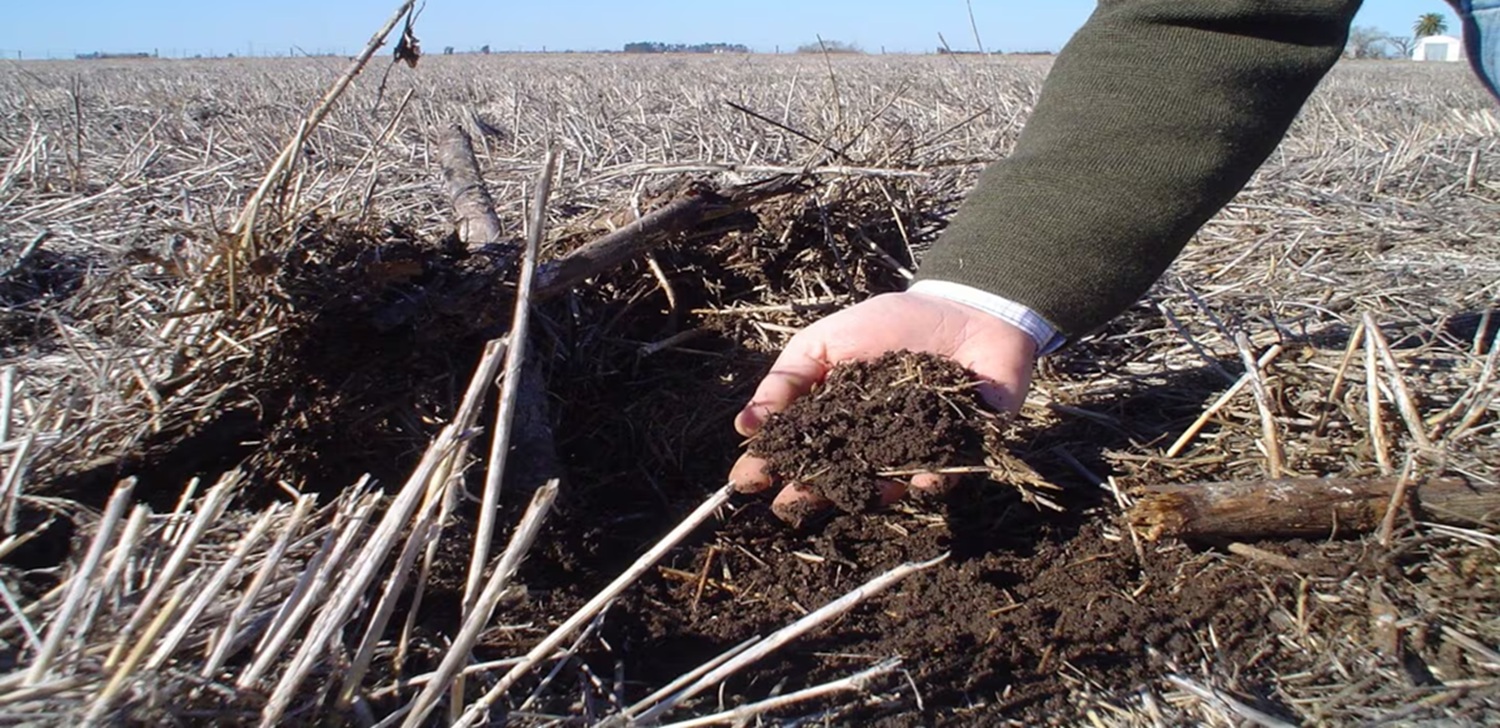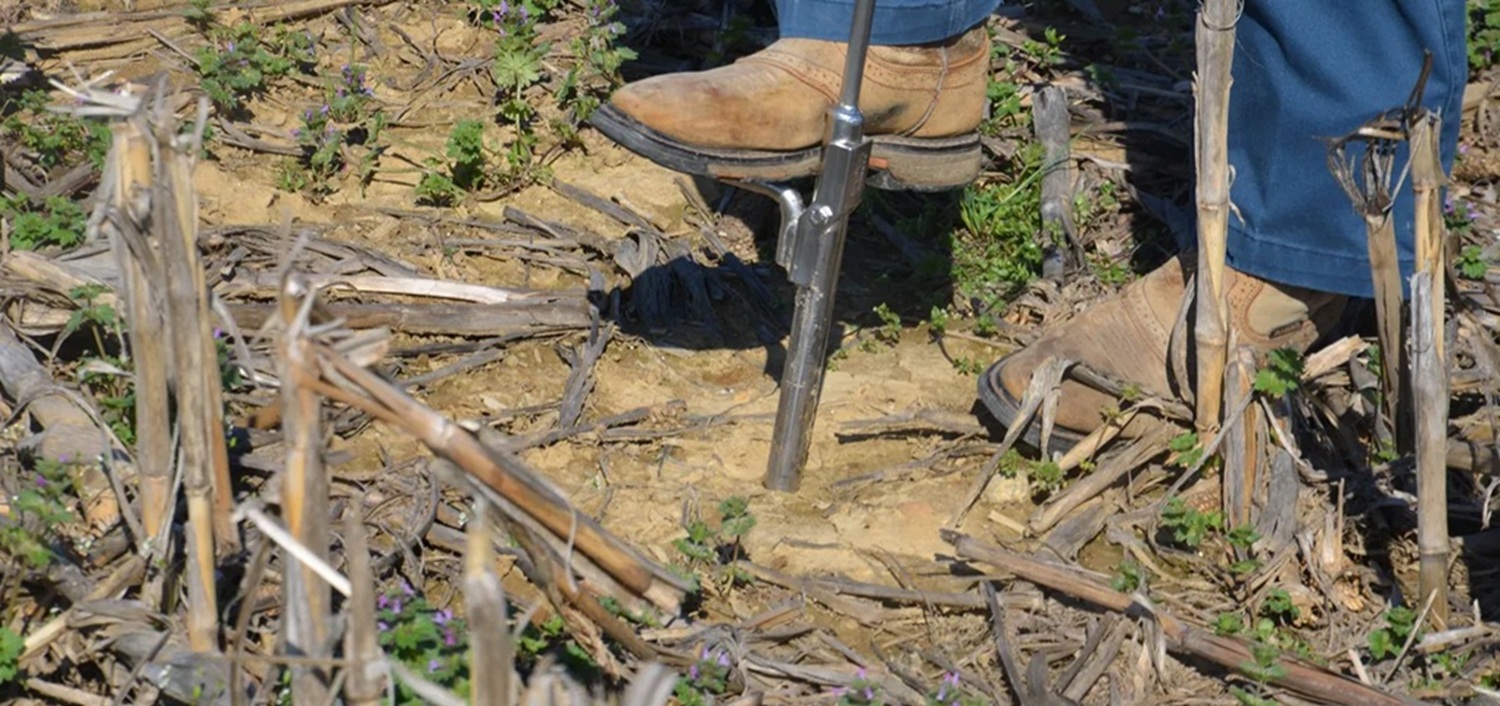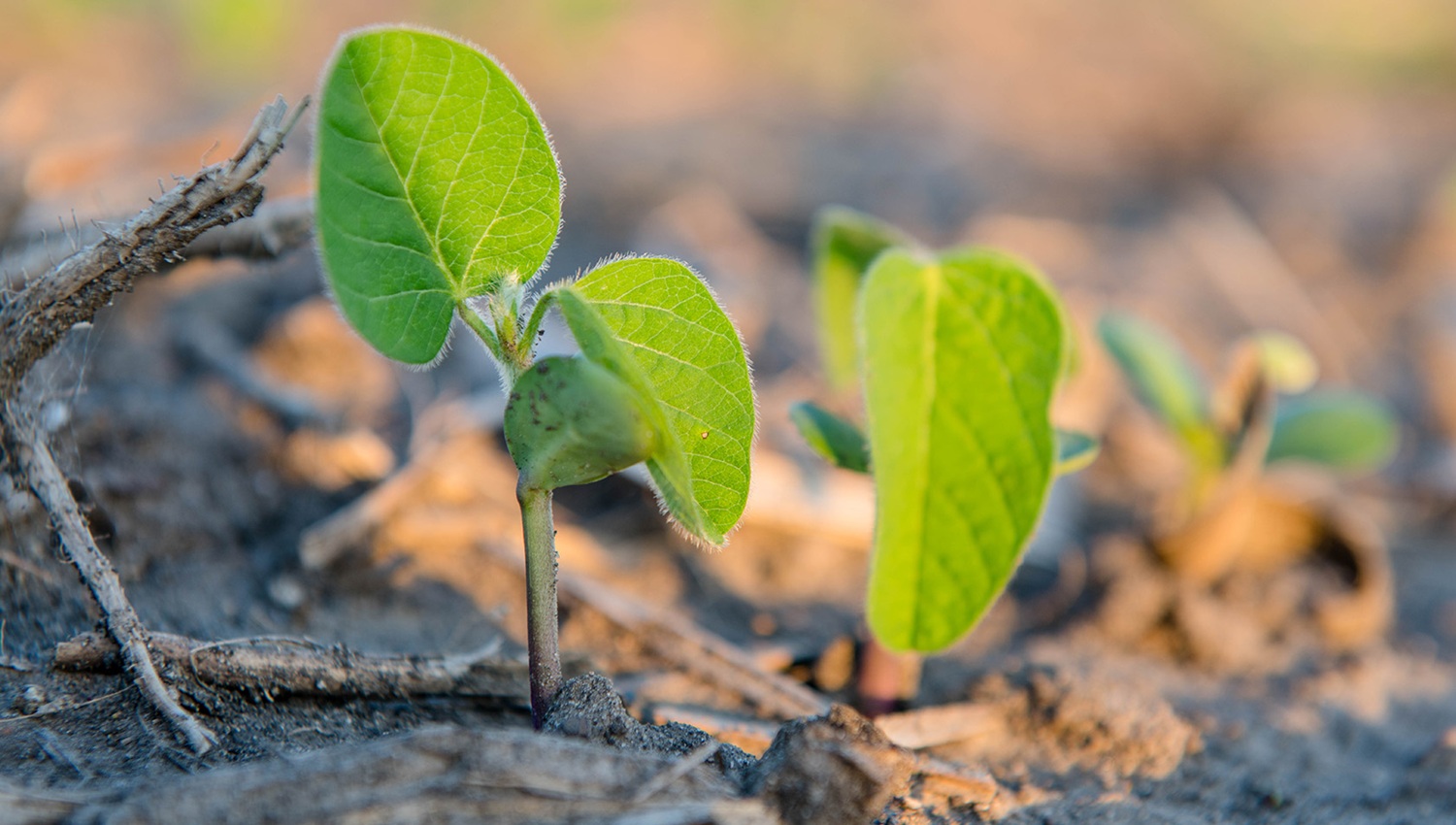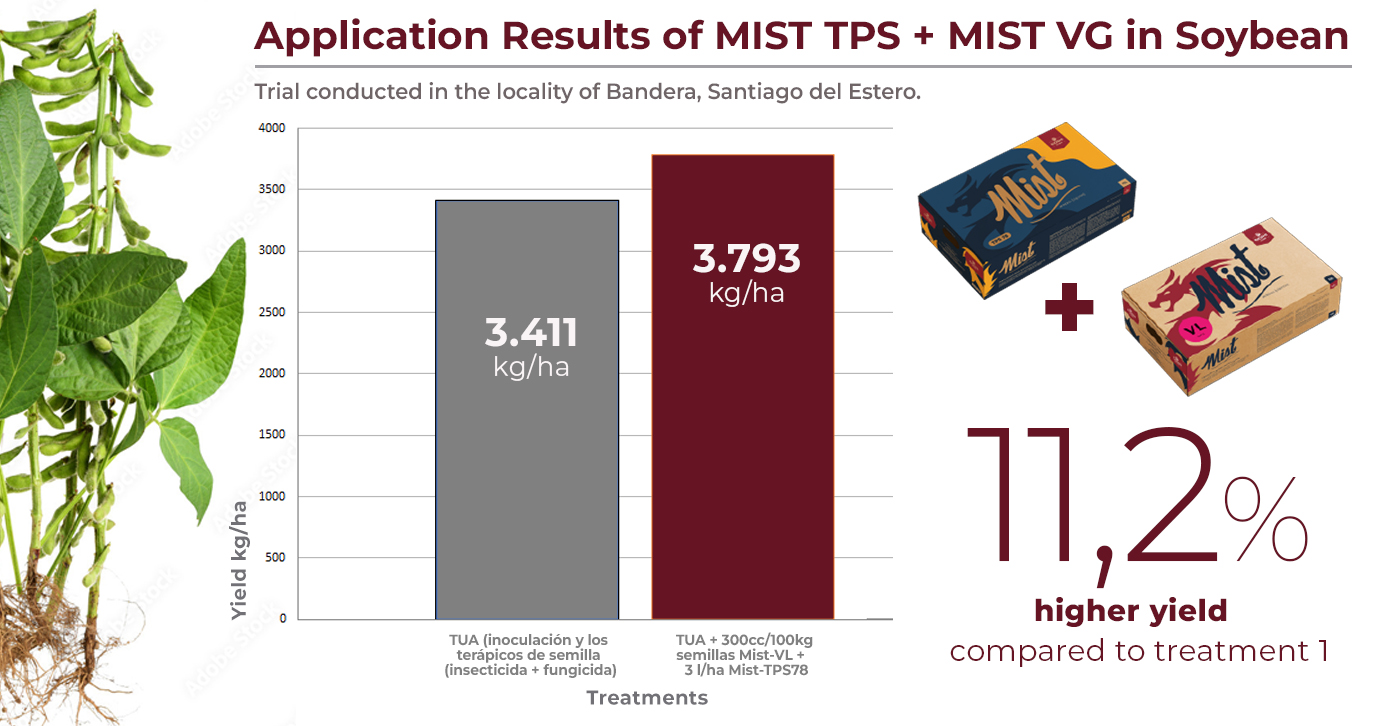Correction of the Soil Profile and Integrated Management in Soybean Production

The correction of the soil profile through the restitution of calcium and magnesium, combined with technologies that stimulate the seed’s initial physiology, significantly improves nutrient use efficiency and strengthens crop establishment under adverse conditions. The incorporation of nanotechnology applied to the soil and seed implantation is redefining soybean base management, enabling the recovery of productivity, stability, and agronomic resilience in challenging environments.
Soybean remains one of the pillars of the Argentine agricultural system, not only for its economic contribution but also for its strategic role within crop rotations. However, its productivity is increasingly limited by the progressive loss of soil quality. Reports from INTA and Fertilizar Asociación Civil agree that over 50% of the country’s agricultural fields show low phosphorus levels, a sustained decline in organic matter, and chemical imbalances that affect nutrient availability. This deterioration compromises the crop’s potential yield and highlights the need to move toward more efficient and integrated fertility management.
Required Soil Quality
An ideal soil for soybean cultivation must have balanced chemical, physical, and biological conditions. Chemically, it is essential to maintain a slightly acidic to neutral pH (between 5.8 and 7.2), phosphorus (Bray) levels above 18 ppm, good base saturation, and an adequate ratio between cations—particularly calcium and magnesium. Physically, the soil structure should allow proper aeration, infiltration, and aggregate stability, avoiding compaction processes that restrict root growth. Biologically, microbial activity should be intense and balanced, promoting biological nitrogen fixation and nutrient solubilization. However, most Argentine soils are far from this ideal due to years of continuous cropping, poor mineral replenishment, and erosion or salinization processes that affect large productive areas.

One of the critical aspects of Argentina’s soil degradation is the loss of basic cations from the cation exchange complex, especially calcium and magnesium. Leaching, progressive soil acidification, and intensive use of nitrogen fertilizers have accelerated the loss of these bases. According to INTA Manfredi studies, this phenomenon reduces structural stability, limits root development, and decreases the availability of phosphorus and essential micronutrients for soybean crops. At the same time, in soils with extensive agricultural history, there is an increase in exchangeable sodium, which restricts infiltration and promotes compaction, directly affecting water dynamics.

In this context, the use of nanoparticulated amendments represents an effective technological alternative to improve the soil’s chemical profile. MIST-TPS®, developed by Kioshi Stone, is a liquid amendment based on high-purity nanoparticles composed of calcium, magnesium, and sulfur. Its formulation allows the progressive restitution of basic cations to the cation exchange complex, improving base saturation and restoring natural fertility. Unlike traditional solid sources, its nanometric size ensures excellent mobility within the soil profile, achieving faster responses at low doses, between 2 and 4 liters per hectare. Moreover, the entire TPS line is organically certified in Argentina and the United States, positioning it as a tool aligned with sustainable production systems. Application of MIST-TPS® is recommended about 20 days before planting to improve initial root development conditions.
Enhancing Early Development
Once the soil environment is corrected, the next decisive factor for achieving high soybean yields is successful crop establishment. Trials from the INTA Cultivar Evaluation Network demonstrate that rapid, uniform emergence with vigorous plants defines much of the yield potential—particularly in environments with climatic uncertainty. In this stage, seed vivifiers play a key role by activating the crop’s early physiology and strengthening its interaction with the soil from the moment of germination.

MIST-VL® is a seed vivifier formulated for legumes that combines mineral nanoparticles of sulfur, calcium, silicon, molybdenum, manganese, boron, and cobalt. These elements are directly involved in key metabolic processes during germination and nodulation. Calcium acts as an activator of ion transport and strengthens cell walls, facilitating early root growth. Molybdenum and cobalt are essential for biological nitrogen fixation, participating in nitrogenase enzyme synthesis and stimulating Bradyrhizobium activity in the rhizosphere. Sulfur contributes to the formation of essential amino acids such as methionine and cysteine, while silicon strengthens plant structure and enhances tolerance to abiotic stress.
MIST-VL® ensures the immediate availability of nutrients from the moment of germination. When seeds are treated before planting, a micro-zone forms around the primary root with favorable pH and mineral conditions. This accelerates germination, improves emergence rate, and promotes the development of a dense, active root system. Furthermore, MIST-VL® fosters early symbiosis with rhizobia and nutrient-solubilizing microorganisms present in the soil, increasing the number and functionality of nodules—a decisive factor in biological nitrogen supply throughout the crop cycle. Due to its operational compatibility with inoculants and chemical seed treatments, it can be applied without technological interference at very low doses (500–1000 cm³ per 100 kg of seed), providing excellent agronomic performance.
High-Potential Strategy
Combining corrective soil strategies before planting with physiological seed treatments builds a comprehensive agronomic approach. The complementary use of technologies such as MIST-TPS® and MIST-VL® is supported by field results: faster crop establishment, better root exploration, improved nutrient efficiency, increased early vigor, and greater stress tolerance during early stages. This reduces production risks in seasons with uncertain climate forecasts and enhances yield stability over time. At the same time, these technologies promote sustainability in practical terms by increasing resource-use efficiency, reducing nutrient losses by leaching, and decreasing dependence on large volumes of traditional inputs.
Field Results
A trial conducted by Bioma in a field near the city of Bandera (G. Taboada Department, Santiago del Estero Province) aimed to evaluate the performance of MIST liquid fertilizers—both macro- and micronutrient formulations—on soil chemical properties and soybean yield. Results showed an average yield of 3,531 kg/ha, higher than the regional average (3,263 kg/ha) for the last five growing seasons, according to agricultural estimates from Argentina’s MAGyP.

In conclusion, treatments combining MIST-VL® and MIST-TPS® produced an additional yield of 382 kg/ha compared with the control treatment.